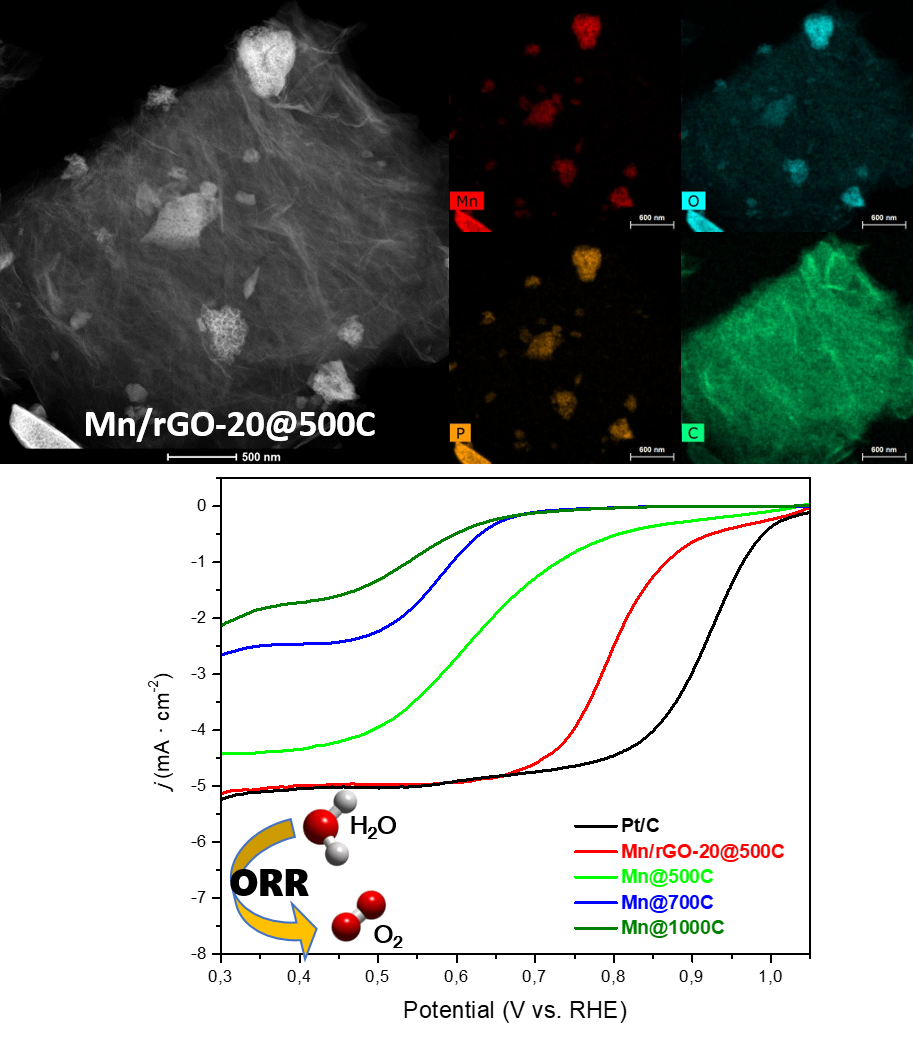Electrocatalytic properties of metal hydroxy-phosphonoacetate derivatives for OER, ORR and HER
R.M.P. Colodrero*¹, A. Vílchez-Cózar¹, M. Bazaga-García¹, P. Olivera-Pastor¹, C. del Rio², M. López-González² and A. Cabeza¹
*colodrero@uma.es
¹Departamento de Química Inorgánica, Universidad de Málaga, Spain
²Instituto de Ciencia y Tecnología de Polímeros (ICTP-CSIC), Madrid 28006, Spain
Abstract: Although Pt and Ru/Ir-based noble metal materials are the state-of-the-art electrocatalysts for energy storage and conversion, their applications are still limited by their scarcity and high price. Therefore, the design of low-cost and efficient electrocatalysts is highly desired and full of challenge [1].
Herein we report the electrochemical properties of several metal phosphonates derived from the reaction of (R,S)-2-hydroxyphosphonoacetic acid (HPAA) with transition metals (M = Fe²⁺, Co²⁺, Mn²⁺, Ni²⁺), including their corresponding solid solutions. By pyrolytic treatment under N₂ or 5% H₂/Ar, materials having a wide range of compositions (phosphate, pyrophosphate, phosphides…) have been prepared and their electrochemical properties tested for OER and ORR and HER. Pyrolyzing in N₂ at 500 °C, led to amorphous pyrophosphates, with Fe²⁺/Co²⁺ solid solutions displaying the lowest overpotential for the OER, whereas the Mn²⁺ derivative showed the best performance for the ORR. At higher temperature, pyrolyzed materials were crystalline pyrophosphates (N₂) or metal phosphides (H₂-Ar). In general, the latter compounds displayed better performances for the HER, Ni₂P being the most active electrocatalyst. Addition of reduced graphene oxide (rGO) significantly improved the behaviour of the electrocatalysts for OER and ORR.

Acknowledgments: This research was supported by PID2019-110249RB-I00 research grant (Spain), PAIDI2020 research grant of Junta de Andalucia (Spain), University of Malaga under Plan Propio de Investigación and Ayudas para la contratación predoctoral (PRE2020-094459).
[1] Chen, L.; Ren, J.-T.; Yuan, Z.-Y. ACS Sustainable Chem. Eng. 2021, 9(4), 1856–1866.
